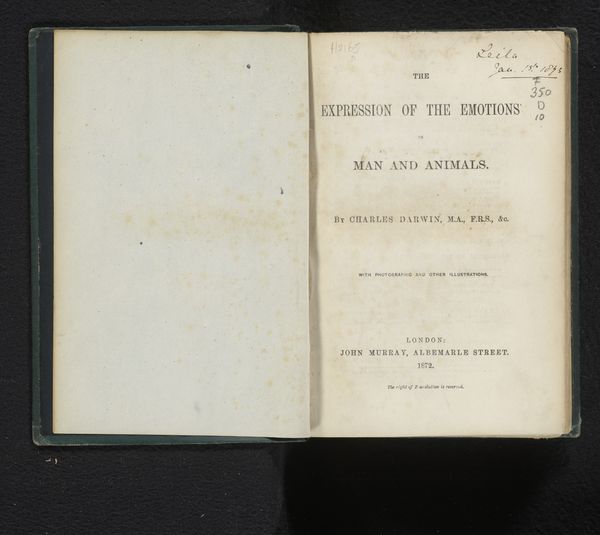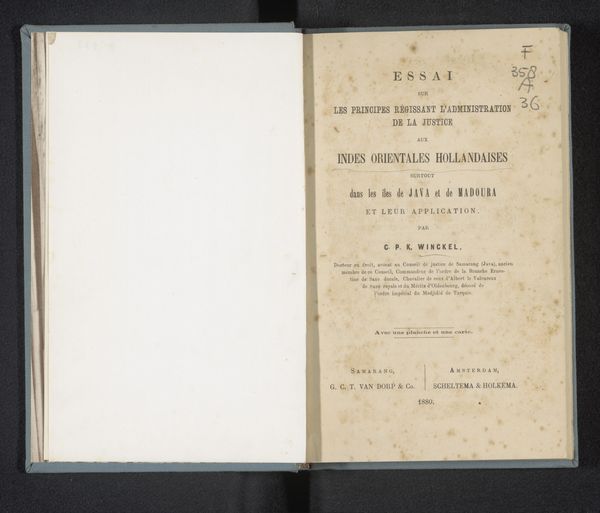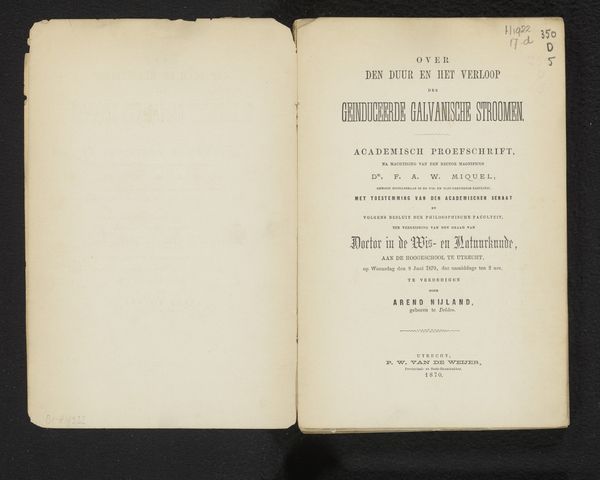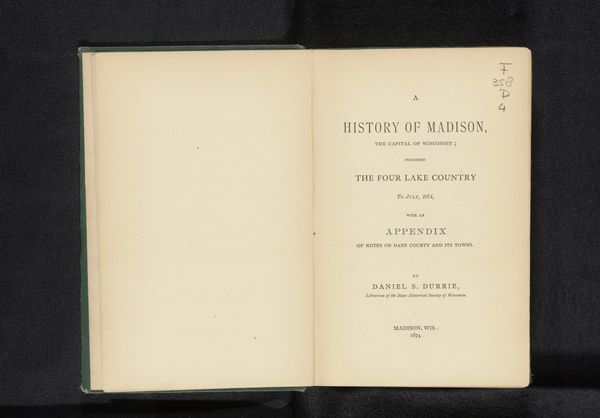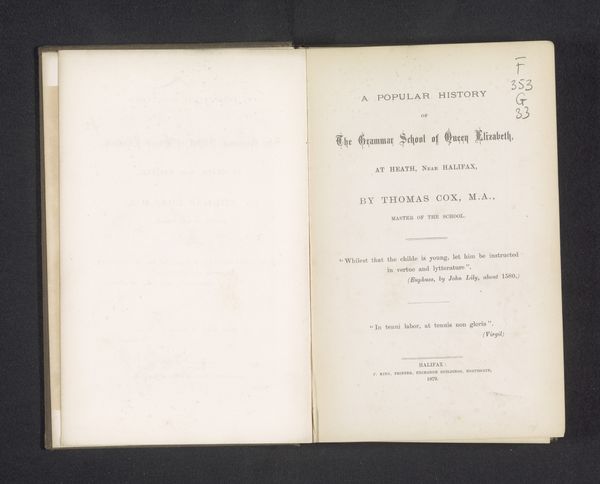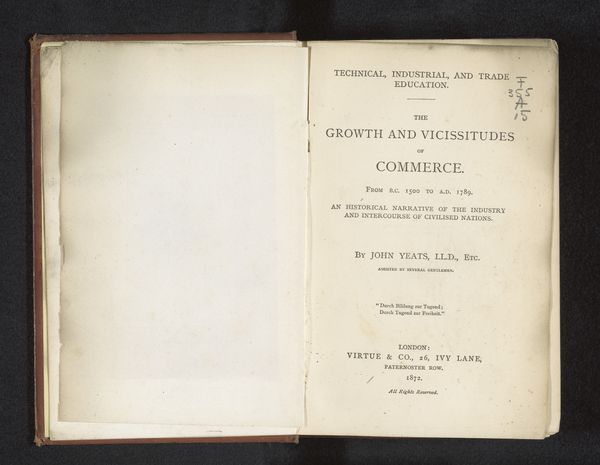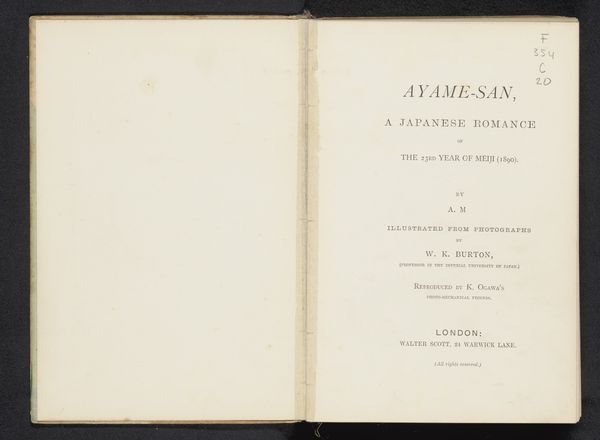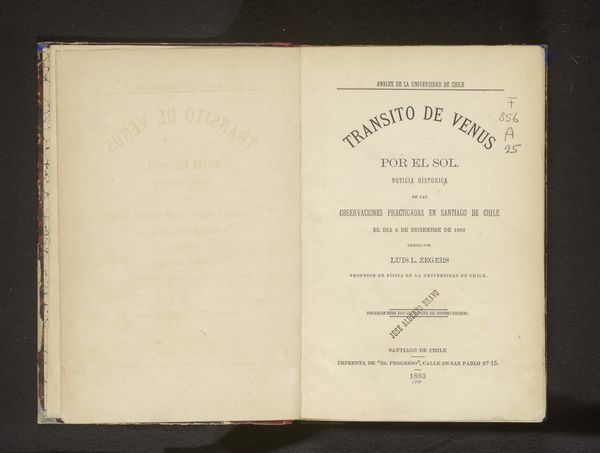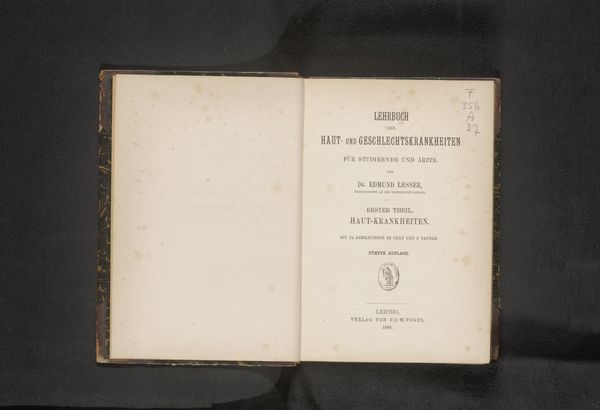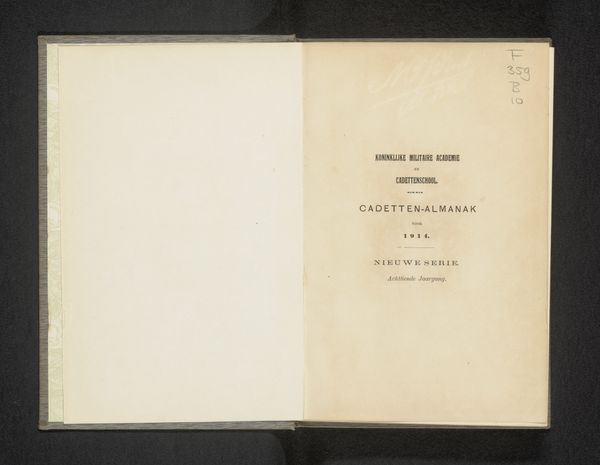
print, paper
# print
#
neo-impressionism
#
paper
#
islamic-art
#
history-painting
#
academic-art
#
realism
Dimensions: height 250 mm, width 168 mm, thickness 20 mm
Copyright: Rijks Museum: Open Domain
Curator: Here we have “Recherches sur le microbe du choléra asiatique,” or "Research on the Asiatic Cholera Microbe," a print from 1885 by Émile van Ermengem. It's striking, isn't it? Editor: Yes, instantly. The composition is intensely ordered; the title page of what seems to be an academic treatise. A stark contrast with the swirling, almost chaotic marbled endpapers on the adjacent page. It sets up an interesting tension. Curator: Indeed. Consider the implications of framing scientific advancement in this way, during a period of immense anxiety around disease and globalization. This document wasn't just information; it was a symbolic act of claiming authority in the face of widespread panic. The rigid, clear typography speaks to an aspiration of total knowledge and complete control. Editor: Precisely! It reflects a certain societal confidence – or perhaps a desperate attempt to project such confidence during a time of crisis. Think about the role of scientific institutions at the time. Presenting findings to the Minister of the Interior implies that scientific discoveries have a public, even governmental, importance. This kind of presentation shapes how cholera, and the idea of germs themselves, are perceived by the public. Curator: The use of simple typeface also lends itself to a kind of austere functionality. Ornamentation is almost totally rejected in the design, except perhaps for those flourishes that mimic the very microbes they seek to understand. And of course, the very concept of reproducing photomicrographs in print… It’s a claim to representational truth. Editor: Absolutely. That accessibility also democratizes the pursuit of understanding to an extent. And the document’s materiality as a bound print, on paper, anchors it to a specific time, institution, and social ambition to comprehend, contextualize, and control a widespread fear. Curator: Ultimately, this print operates on multiple levels—a formal record of scientific research and a reflection of broader societal anxieties and aspirations of the late 19th century. Editor: Indeed, a powerful example of how scientific documents can reveal not just knowledge, but the entire socio-cultural context in which that knowledge is produced and disseminated.
Comments
No comments
Be the first to comment and join the conversation on the ultimate creative platform.
